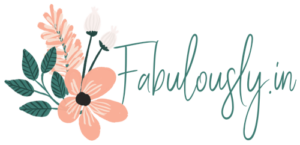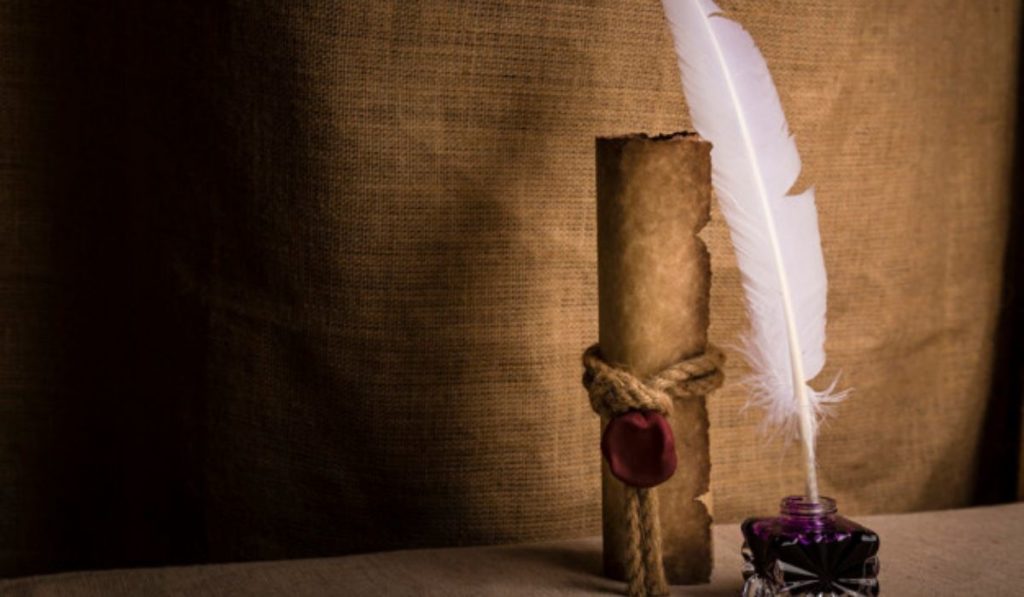Do you want to say something to your loved ones? How about trying it in the old-style informal letter? Would you like to convey your message in writing? Do you remember how to write an informal letter? Let’s recall it together.
Letter writing is an age-old trend, now out-fashioned, though. The trend of writing letters started in ancient India and rose during ancient Egypt and Sumer through Rome, Greece, and China. While letters were initially used to self-educate, these gradually became the communication medium. People used to write letters to their loved ones, friends, partners, etc., sitting miles apart. However, this beautiful, traditional means of communication lost its spark with the rise in information technology. People nowadays use emails to communicate professionally, while numerous messenger applications are trending for informal interactions.But as we say, Old is Gold; no email, chat, or messenger app could ever replace the charm of letter writing. So, let’s return to the past and see how to write an informal letter. You never know when you might need this art in the future again. (Source)
Take notes, guys!!
What is an informal letter?

Image Source: LD@School
Before we delve into writing an informal letter, let us first understand an informal letter’s meaning and purpose.
Informal letters are written in a personal fashion. Unlike formal letters, you can write an informal letter to a friend, relative, family member, or anybody with whom you have a non-professional association. In other words, we write informal letters to people we may know personally. For this reason, they tend to be long and detailed. This form of letter writing shows that the writer has taken the time to communicate. Further, their format is flexible and formal.
With informal letters, you can be as creative as you want. You may include multiple topics and add images, photographs, tables, charts, etc., to an informal letter.
Let us know what constitutes an informal letter.
1. Receiver and Purpose
Before writing an informal letter in English, consider these two things crucial. Your letter’s length, tone, and content will all be influenced by the recipient and the purpose of the correspondence. Therefore, consider your options before beginning a casual letter.
2. Language and Tone
The best part about writing a short informal letter is its language and tone. We can use a casual or friendly manner since we write these for our loved ones. You have the freedom to choose any language that both parties can understand. Spelling modifications, contracted forms (short forms), bilingual words, etc., are all allowed. In short, writing a small informal letter is like conversing with the other person. Hence, you can report it in any way you want.
3. Emotions
More than the language, emotion is what matters here in informal letters. Unlike formal letters, informal letters tend to have more emotional value. The mixture of the language you use and the content you write is why they are candid. Whether you are writing an informal letter to your childhood buddy, Ma-Pa, or siblings, do not forget to add a pinch of emotions. The intention is that the person reading your letter should feel exactly how you’ve felt.
Informal Letter Writing Format
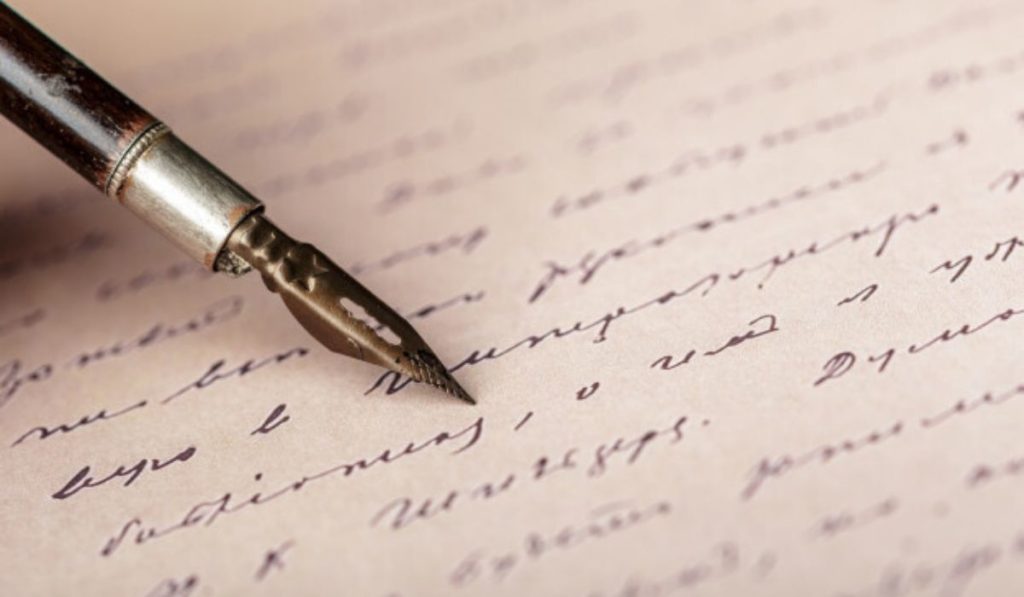
Unlike formal letters, there is no standard, friendly, informal letter format in English. However, there is a universal informal letter pattern that people across the globe follow. There are no hard and fast rules, as such. These are just a few tips one must consider when writing such letters. The pattern and suggestions we share may guide you if you write an informal letter for the first time.
Students, please take notes for informal letter writing!
——————————————-***————————————–
Address (Where do you currently stay?)
Date (The day of writing the letter)
Dear (Name of the lucky recipient)
Opening/Introduction
(Begin with a good catch-up line)
Use this portion to write about what made you write this letter or what the purpose of this letter is. If this is a reply to an old letter, acknowledge it and let them know how you felt when you received their letter.
Body
(The actual story – why are you writing this letter)
Conclusion
(Wrap up using a few final words)
Signature
(Use a creative or fun sign-off)
——————————–***————————————
So, the basic elements of informal letter writing are:
Address of the Sender
Informal letter writing begins with the address of the sender, i.e., the person writing the letter. It should be written on the left-hand side of the letter/paper. We give our address in the letter so that the receiver can reply. Ensure you give your complete address, including the Letter Box/Post Box number, City, Street, and Pin Code. Also, remember to add the country name if you send this letter to an international receiver. This is how to write an address in an informal letter.
No. 11, Third Floor,
Part 2 Market,
Greater Kailash,
Delhi – 110048
DATE
Next to the sender’s address comes the date when the letter is written. The most common way to write a date is mm/dd/yy (month, day, year). The name of the month should always be written in Capital. However, there’s a difference between the date format in British and American English.
- Date Format in British English
22nd November 2020
- Date Format in American English
November 22nd, 2020
Greeting the Receiver
After the date comes the greeting line; since we are writing an informal letter, the greeting can be as casual as you want. You can either use their full name or just the first name. Also, you may or may not end with an exclamation. Instead, you can put a comma at the end.
Dear Rohan,
Hi Rohan,
Hello Rohan!
Further, add a friendly expression that follows the receiver’s name.
Example:
How are you?
I hope you’re well!
Greetings for the informal letter
When writing an informal letter, the greeting is crucial to setting a friendly and personal tone. Here are various greetings you can use, tailored to the relationship you have with the recipient and the tone you wish to convey:
Casual Greetings
- Hi [Name],
- Hey [Name],
- Hello [Name],
Warm Greetings
- Dear [Name],
- My dear [Name],
- Dearest [Name],
Playful or Affectionate Greetings
- Hello there [Name],
- Hiya [Name],
- Hey [Bestie/Nickname],
Seasonal Greetings
- Happy [Season/Holiday], [Name],
Depending on the situation and how close you are to the recipient, you may use these salutations in your letter. Setting a tone based on your closeness to the one you are sending the letter to is always a good idea.
Format of a Letter
INTRODUCTION
The first Paragraph after the greetings section is the introduction. This section sets the tone of the letter. You can either use it to tell the receiver about your purpose for writing the letter or talk about memory to build a storyline.
I am excited to tell you…..
Hey, I have missed you since we last met…
I got your message on…….
BODY
Use this section to elaborate on the purpose of writing the letter. You can write everything you want to tell the person. Just keep your sentences short and friendly. One important thing here is to adjust the tone and usage of words depending on your relationship with the receiver. For instance, you can use friendly terms if you write to your friend. But choose respectful comments if you write a letter to someone respectable like your parents or grandparents.
CONCLUSION
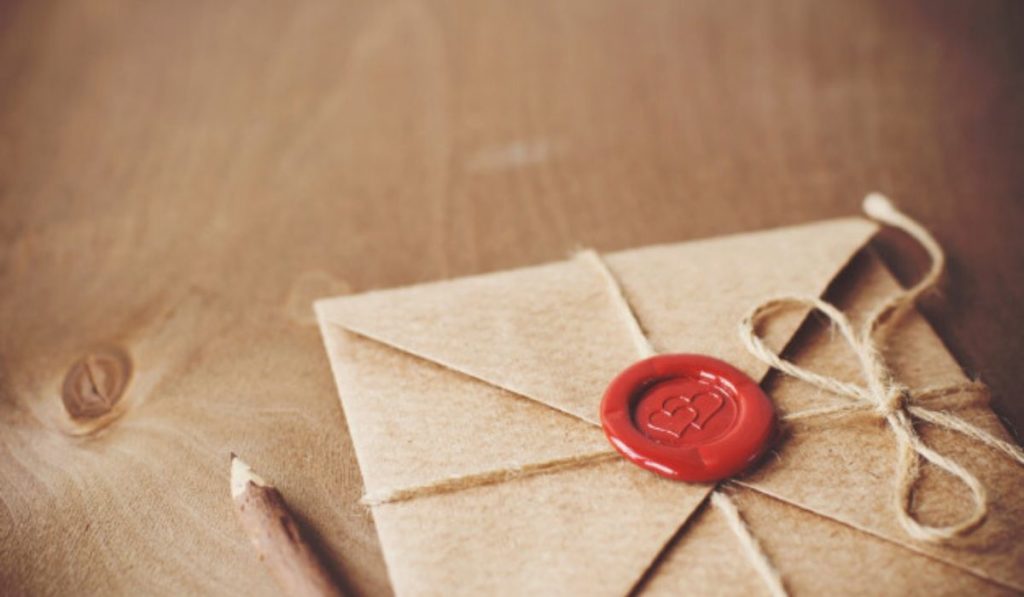
Wrap up the letter with some good closing lines. Leave them with a reason to revert on your note. This will show your intention to continue the conversation. You can also give advice, recommendations, or suggestions on their future endeavors.
Finish off your letter with a nice closing line.
I hope to hear from you soon.
Give my love/regards to your family.
Say hello to the kids.
See you soon.
SIGNATURE
In the case of informal letter writing, there’s no way to close the letter. You can put your signature simply or sign off the way you want. You may also choose the closing line based on the purpose of your letter.
Yours lovingly,
Karan
Best Wishes,
Karan
Lots of Love
Karan.
How to Write an informal letter to your friend– General Tips
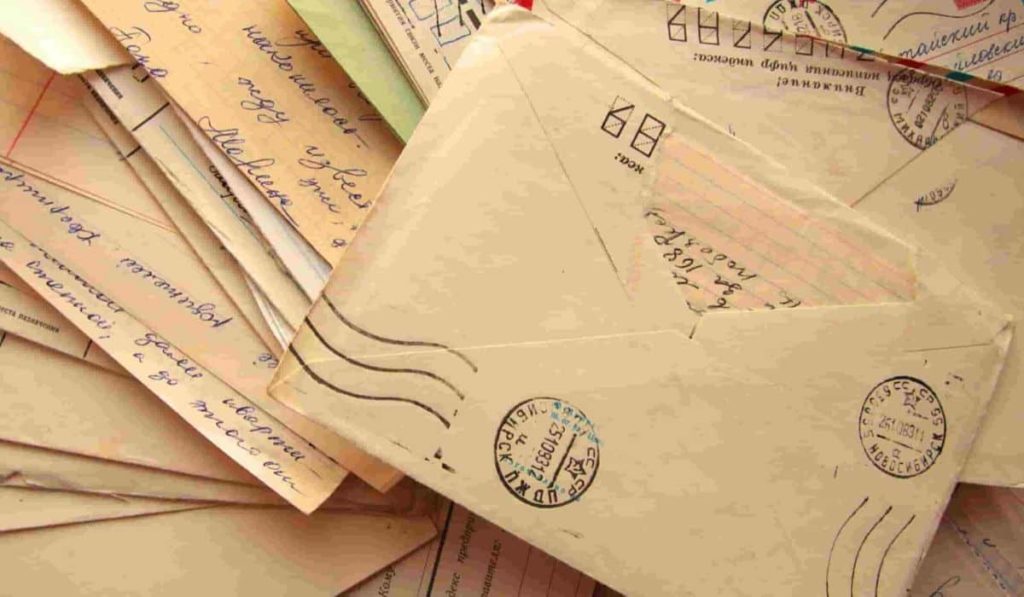
Time needed: 10 minutes.
WHILE WRITING AN INFORMAL LETTER STRUCTURE, YOU MIGHT TAKE INTO ACCOUNT THE FOLLOWING:
1. Write your full address with the correct PIN code.
After including the date, the first item in an informal letter should be the sender’s address. It should be ideally located at the top right corner of the page. It is useful since the person you are writing to will have your address if they want to reply.
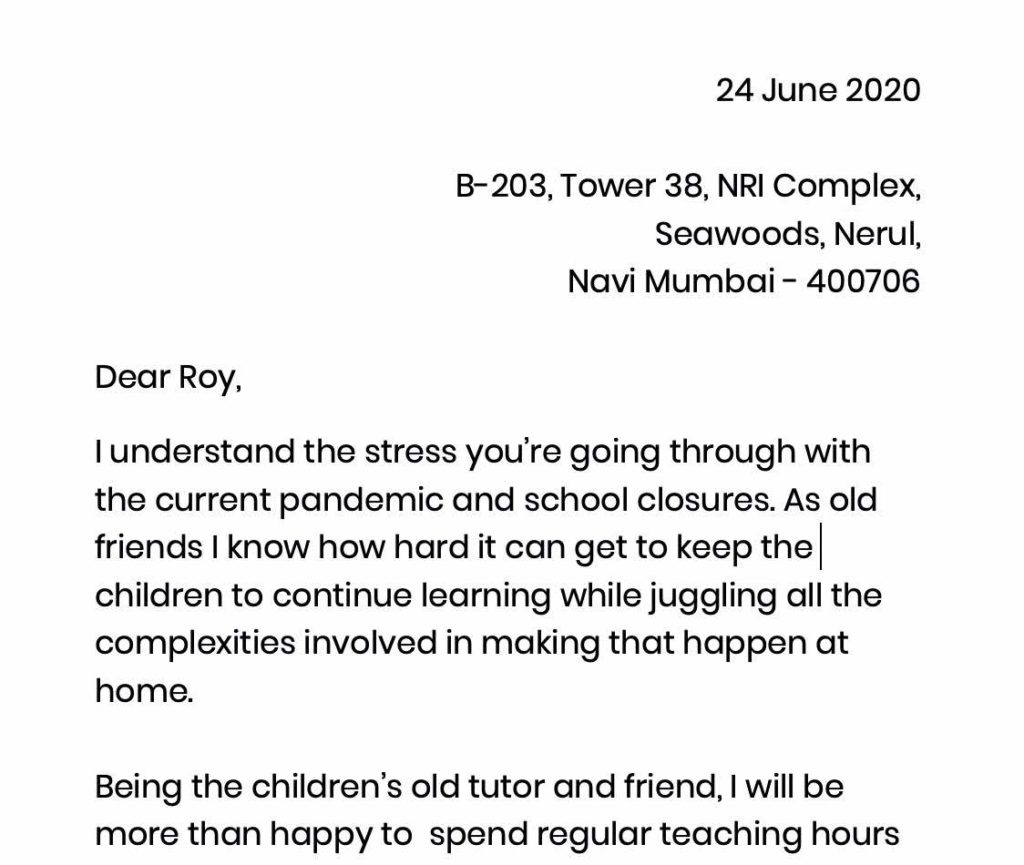
2. Keep your writing simple and friendly.
3. Divide your letter into small paragraphs.
4. Choose your words carefully, even if you are writing to a friend. Consider the purpose of your letter before you choose the words.
5. You can use contractions like isn’t, it’s, it’ll, can’t, won’t, etc.
6. Use anecdotes, phrasal verbs, and real-life incidents to make your writing creative and engaging.
Informal Letter Sample
Here, we provide an example casual letter to help you see how the structure and fundamental guidelines we just discussed work in practice.
Informal Letter to a Friend – Sample
No. 11, Third Floor,
Part 2 Market,
Greater Kailash,
Delhi – 110048.
30th May 2020
Dear Sam,
How are you? It’s been long since we met. I hope you’re doing great.
As winter is approaching, I would like to spend time with you. I miss our school days when we hung out together all day. Remember eating those spicy corn bhajis at Chandni Chowk? I haven’t been there since you shifted to Mumbai. I feel like going back to the past sometimes.
Nevertheless, I would like to know if we can spend the winter breaks together at my place in Delhi. We will visit all those places we used to, and meet our school-time friends. To add the cherry on the cake, we could also visit Rishikesh or Dehradun.
I am excited at the thought of meeting you, Sam. I have got a long list of things ready to tell you. I hope you feel the same way. Give my regards to Uncle and Aunty.
I hope to hear a YES from you this time!
Your buddy,
Amar
Informal Letter-Writing Topics
Informal letter writing offers an excellent opportunity to express thoughts, share experiences, or stay connected with friends and family in a personal way. You can write a letter to your friend on the following topics –
- Life Updates
- Share what’s new in your life, such as a new job, hobby, or significant achievement.
- Discuss recent changes or milestones, like moving to a new city or graduating.
- Travel Experiences
- Describe a recent trip or vacation.
- Recommend places to visit and foods to try, or share funny or memorable incidents from your travels.
- Invitations
- Invite a friend or family member to a personal event, such as a birthday, wedding, or holiday gathering.
- Propose a plan to meet up for a weekend or holiday trip together.
- Celebrations and Congratulatory Messages
- Congratulate them on a recent success, such as a promotion, engagement, or the birth of a child.
- Celebrate a festival or holiday and share your plans or experiences related to the occasion.
- Reflecting on Memories
- Reminisce about shared experiences or adventures.
- Talk about past events that were significant to your relationship.
- Books, Movies, and Media
- Recommend books, movies, or TV shows you think they would enjoy.
- Discuss your thoughts on a recent film or book you have read or watched.
- Advice and Support
- Offer advice on a problem they might have shared with you.
- Express your support during a tough time they are facing, like illness or personal challenges.
- Hobbies and Interests
- Share details about a new hobby or interest you’ve picked up.
- Ask about their hobbies and what they’ve been doing in their free time.
These informal letter-writing topics can be tailored to suit the personality and interests of both you and the recipient, making your letter meaningful and engaging.
Informal Letter Example
123 Hometown Lane
Sunshine City, SS 12345
April 18, 2024
Hi Emily,
I hope this letter finds you well! It’s been far too long since we last caught up. I keep thinking about our college days and all the adventures we used to have. How’s everything going with you?
Things on my end have been quite eventful. I started a new job at a tech startup last month, and it’s been a whirlwind of learning and excitement. It’s a significant shift from my previous job, but I enjoy the challenge. Plus, the people are great!
I also took up pottery as a hobby. I’ve always wanted to try it, and I finally signed up for a class at the community center here. It’s super relaxing and a nice counterbalance to the hustle of work life. Have you picked up any new hobbies lately?
Guess what? I’m planning a trip to Europe this summer! I remember you mentioned wanting to explore Italy. It would be fantastic to sync our schedules and meet somewhere. What do you think? Let me know if you’re up for it, and we can start planning something exciting.
Give my regards to Mark and the kids. I miss you all and hope we can arrange a get-together sometime soon. Let me know how everything is going on your end, and make sure to complete all the details!
Take care and write back soon!
Warmest regards,
Sarah
Types Of Letters
Letters can be broadly classified based on purpose, content, and audience. Here’s a breakdown of the main types of letters:
1. Formal Letters
These are written in a professional tone and follow a specific format. Formal letters are used for official communications and include several sub-types:
- Business Letters: These involve transactions, sales, inquiries, or other business-related communications.
- Official Letters: Written to government officials or institutions for official purposes.
- Job Application Letters: Accompany your resume when applying for a job.
- Complaint Letters: Address grievances and request for action or resolution.
- Inquiry Letters: Request more information about a product, service, or other interest.
2. Informal Letters
These are personal letters written casually or friendly, typically to friends or family. Sub-types include:
- Friendly Letters: Casual letters written to friends and acquaintances.
- Congratulatory Letters: Celebrate achievements or milestones like weddings, graduations, or promotions.
- Invitation Letters: Extend a personal invitation for events like a party, a meal, or a get-together.
- Thank You Letters: Show appreciation towards someone for their help or kindness.
- Apology Letters: Apologies for a mistake or misunderstanding.
3. Semi-Formal Letters
These letters fall between formal and informal letters. They are used when you have a personal acquaintance with the recipient, but the letter serves a professional purpose or is related to official matters. For example:
- Letters to Colleagues or Acquaintances: What about a project or a committee invitation?
- Letters to a Landlord: For requests or issues related to a rental property.
4. Special Purpose Letters
These are written for specific situations and can be either formal or informal, depending on the context:
- Cover Letters: Accompany your resume as part of a job application but are tailored to highlight your qualifications for a specific position.
- Recommendation Letters: Written to provide a reference for an individual.
- Resignation Letters: Inform an employer of your intention to leave a company.
- Letters of Condolence: Express sympathy and condolences in times of loss.
Each type of letter requires a different style and tone, tailored to the audience and its specific purpose. Whether it’s a business transaction or a personal note, understanding the appropriate type of letter can enhance your communication ability.
Informal Letter For Class 6
45 Oak Street
Greenwood City, GC 67890
April 18, 2024
Dear Sam,
I hope you’re doing well and enjoying your school break as much as I am! I just returned from a family trip to the mountains and couldn’t wait to tell you about it.
We went to Rocky Mountain National Park for a week, and it was so much fun! We stayed in a small cabin near a lake. Every morning, I would wake up to the sound of birds and the smell of pine trees. It was peaceful and beautiful.
One of my favorite days was whe we went hiking to a waterfall. The walk was long and tiring, but it was worth it when we reached the top. The view was excellent, and the water was super cold! I even saw some deer on our way back to the cabin.
We also went fishing in the lake. I didn’t catch much fish, but my dad caught a big trout, which we cooked for dinner. It was delicious! At night, we would sit by the fire, roast marshmallows, and tell stories. I wish you were there; it would have been even more fun!
How about you? Did you go on a trip this summer, or did you do something fun at home? I’d love to hear all about your adventures, too.
I miss hanging out with you at school. Let’s plan to meet up soon when school starts again. We could go to the park or have a sleepover.
Write back soon when you get a chance. Say hi to your family for me!
Take care and see you soon!
Your friend,
Alex
Informal Letter For Class 8
123 Maple Drive
Sunset Town, ST 90123
April 18, 2024
Dear Jordan,
I hope this letter finds you in great spirits! I’ve been meaning to write to you since our last phone chat, but school has kept me super busy lately. Speaking of school, something exciting is coming up, and I wanted to tell you about it!
Next week, our school is hosting the annual Science Fair, and guess what? I’ve decided to participate this year. I’ve teamed up with Mia from our class, and we are working on a project about renewable energy sources. We’ve built a small model demonstrating how solar and wind power work together to light up a small house.
I hope you can come and see it. The fair will be held in the school auditorium on the 25th of this month from 9 AM to 4 PM. It would be fantastic if you could come; you would see some cool projects, and we could also hang out afterward and catch up.
How have things been with you? Are you still taking those guitar lessons you told me about?
Please let me know if you can make it to the science fair. I’m hoping you can. It would mean a lot to have my best friend there. Plus, I’m sure you’d enjoy the experiments and maybe get inspired for your project next year!
I am looking forward to hearing from you soon. Give my regards to your family. Miss you loads!
Warmly,
Sophia
Informal Letter For Class 7
789 Willow Lane
Riverdale, RD 45678
April 18, 2024
Dear Leo,
How are you doing? I hope you and everyone at home are doing well! It feels like it’s been forever since our last family reunion. I miss hanging out with you and playing video games until late at night.
I wanted to tell you about my new school because I just started seventh grade here, and it’s different from our old school. First, it’s much more significant, with students from all over the city. I was a bit nervous on the first day, but I’ve made a few friends already, which is fantastic. We have this vast library filled with books on every subject you can imagine, and there’s even a section just for graphic novels!
My favorite teacher is Mr. Jenkins, who teaches us Science. He has all these crazy experiments that he shows us in class, which makes learning so much fun. For instance, last week, we learned about chemical reactions and saw a volcano eruption experiment—it was awesome!
What about you? How have things been since you started playing the guitar? Have you thought about joining any clubs or activities at your school? I remember you mentioned wanting to join the photography club. Did you go for it? If you have, I’d love to see some of the photos you’ve taken.
I hope you can visit during the summer break. You could bring your guitar, and we could jam together. It would be so much fun!
Write back when you get a chance. I can’t wait to hear all about what you’ve been up to. Say hi to Uncle Joe and Aunt Maria for me. Take care and see you soon!
Lots of love,
Ella
Informal Letter Writing With Examples
Informal letters are written to friends, family, acquaintances, or any other close relation. Unlike formal letters, they are less structured and have a personal, friendly tone. Here’s a guide on how to write an informal letter, along with some examples:
Structure of an Informal Letter
- Address: Your address and date at the top right corner (optional in emails).
- Salutation: Use a friendly opening like “Dear [Name]” or “Hello [Name]. “
- Introduction: Start with a warm greeting or inquire about the recipient’s well-being.
- Body: This is where you write the main content of your letter. It can be multiple paragraphs, depending on what you want to communicate.
- Conclusion: Conclude with a summary or a final thought.
- Closing: Use a casual sign-off like “Best Wishes,” “Take care,” or “Love,” followed by your name.
Example 1: Letter to a Friend
[Your Address]
[City, State, Zip]
[Date]
Dear [Friend’s Name],
I hope this letter finds you in good health and spirits. It’s been a while since we last caught up, and I’m writing to see how you’re doing.
I wanted to tell you about my recent trip to New York. It was an amazing experience! We visited many places like the Statue of Liberty, Central Park, and Times Square. I wish you were there with us!
In other news, I’ve started taking guitar lessons. It’s challenging but really fun. Next time we meet, I can play a song for you.
How have things been on your end? How’s your new job going? I remember you mentioning some projects you were excited about.
I’m planning a small get-together at my place next month. It would be great if you could come. Let me know if you’re free.
Take care and write back when you can.
Best Wishes,
[Your Name]
Example 2: Letter to a Family Member
[Your Address]
[City, State, Zip]
[Date]
Hello [Family Member’s Name],
I hope you’re doing well. I wanted to tell you about what’s been happening here.
School keeps me busy, but I enjoy my classes, especially biology. I’m also part of the school basketball team, which is exciting!
Mom and Dad are doing well. Dad’s garden is flourishing, and he’s proud of his tomatoes this year. Mom’s book club is meeting more frequently, and she’s enjoying the lively discussions.
I heard you’ve taken up painting as a hobby. That sounds so interesting! I’d love to see some of your artwork. Can you send me a photo or two?
I look forward to seeing you at [Event/Family Gathering] next month. It’s been too long since our last family get-together.
Sending you lots of love,
[Your Name]
What to write in an informal letter?
Informal letter meaning says that it is a casual letter, which provides the opportunity to be more open and honest. The content of your letter can vary greatly depending on who you are writing to and why. Keep on reading to learn more about informal letter format 2023.
Here are some ideas and topics you might consider when letter writing to friend –
- Catching Up: Share what’s been happening since you last communicated. This could include updates about your work, school, hobbies, or daily activities.
- Responding to News: If the person has recently shared some news or updates with you, respond to that. Show interest in their life events, achievements, or challenges.
- Sharing Experiences: Talk about a recent trip, event, or experience you had. This could be a vacation, a concert, a new restaurant you tried, or even a book you’ve read.
- Asking Questions: Show your interest in their life by asking specific questions about their well-being, activities, plans, or opinions.
- Plans and Invitations: Discuss any upcoming projects you have and extend invitations. This could be for a meet-up, a party, a trip, or any event you think they might be interested in.
- Reminiscing: Share fond memories you have with the recipient. This could be about past events, shared experiences, or funny anecdotes.
- Offering Advice or Support: If they are going through a tough time or faced with decisions, show your support, advice, or a listening ear.
- Discussing Mutual Interests: Talk about shared interests like movies, books, music, sports, or hobbies. You can give recommendations or consult your latest discoveries.
- Expressing Feelings: An informal letter is a great way to express affection, gratitude, concern, or other emotions personally.
- Making Future Plans: Talk about plans or aspirations and ask about theirs. This could be about upcoming vacations, career plans, or any goals they might have.
- Jokes or Anecdotes: Share funny stories, jokes, or light-hearted anecdotes to keep the letter’s tone cheerful.
- Updates on Family or Mutual Friends: Share news or updates about family members or mutual friends, especially if the recipient knows them well.
- Photos or Drawings: If it’s a physical letter, include photographs, drawings, or small keepsakes. In emails, you can attach photos or links.
- Closing Thoughts: End with a positive note, expressing your desire to keep in touch, hear back from them, or meet soon.
Informal Letters Format- Writing Structure
The tone and structure of an informal letter are less formal and more personal when written to close friends, relatives, or acquaintances. The following informal letter format serves as a basic guide for composing an informal letter. Here is the informal letter writing format –
1. Sender’s Address and Date
Top Right Corner: Start with your address at the top right corner of the page.
Date: Below the address, write the date. This is more important for physical letters than emails.
2. Salutation or Greeting
Friendly Opening: Begin with a casual greeting like “Dear [Recipient’s Name],” “Hello [Recipient’s Name],” or even just “[Recipient’s Name]. “
Flexibility: The level of formality in the greeting can vary depending on your relationship with the recipient.
3. Introduction
Opening Remarks: Start with a friendly opening sentence. This could be a general inquiry about their well-being or a reference to the last time you communicated.
Purpose of the Letter: Briefly mention the reason for your letter.
4. Body of the Letter
Main Content: This is where you write the main message of your letter. It can be several paragraphs, depending on what you want to communicate.
Topics: Share news, ask questions, recount experiences, or discuss plans.
5. Conclusion
Wrap-Up: Conclude your letter by summarizing your main points or a final thought.
Future Communication: You should hear back or meet up.
6. Closing
Sign-Off: Use a casual and friendly closing.
Examples: “Best wishes,” “Take care,” “Lots of love,” and “Yours truly,” followed by a comma.
Your Name: Write your name below the closing.
Informal letter Format, Examples, Writing in Hindi
Writing an informal letter in Hindi follows a similar structure to writing one in English but with a few cultural and language-specific nuances. Here’s a guide to the format of informal letter, informal letter writing examples, and tips for writing an informal letter in Hindi.
Informal Letter Format in Hindi
प्रेषक का पता (Sender’s Address): ऊपरी दाएँ कोने में अपना पता लिखें।
तारीख (Date): पते के नीचे दाईं ओर तारीख लिखें।
संबोधन (Salutation): पत्र की शुरुआत में प्राप्तकर्ता को ‘प्रिय (Recipient’s Name)’ के रूप में संबोधित करें।
मुख्य भाग (Body of the Letter): यहाँ आप अपना मुख्य संदेश लिखें।
समापन (Conclusion): पत्र का समापन एक संक्षिप्त निष्कर्ष या अंतिम विचार के साथ करें।
विदाई संबोधन (Closing): ‘आपका’, ‘स्नेही’, या ‘शुभेच्छु’ जैसे अनौपचारिक शब्दों के साथ पत्र का अंत करें।
हस्ताक्षर (Signature): अपना नाम नीचे लिखें।
Example 1: Letter to a Friend
Here is an example of an informal letter format to friend –
[आपका पता]
[शहर, राज्य, पिन कोड]
[तारीख]
प्रिय [मित्र का नाम],
नमस्कार! आशा है तुम अच्छे होगे। बहुत दिनों से तुमसे बात नहीं हुई, इसलिए सोचा तुम्हें पत्र लिखूँ।
[यहाँ अपना मुख्य संदेश लिखें, जैसे किसी यात्रा, नई गतिविधि या अनुभव के बारे में।]
उम्मीद है तुम भी मुझे अपने बारे में बताओगे। जल्दी मिलने की आशा है।
शुभेच्छाओं सहित,
[आपका नाम]
Conclusion

So, the next time you feel like connecting with your loved ones, try this traditional way of expression. Informal letter writing can be fun and emotional at the same. Just imagine writing a letter to your friend and getting a reply from them. And then, it goes on!
If you are a student and want to practice writing informal letters in English, you can find many informal letter-writing topics on the net. You can even share them with us in the comment section below. For more thoughts and interesting blogs, contact us at Fabulously.
Frequently Asked Questions
If you are wondering how to write an informal letter, you must also know about the recipient. Balancing friendliness and deference in casual correspondence while addressing the receiver is crucial. Depending on your connection with them, you could use the recipient’s first name or a nickname, but avoiding excessively familiar or informal wording is usually advisable.
You might begin your letter with a kind salutation like “Hey there!” or “Hi [Name]!” if you’re writing to a close friend or member of your family. Use a more formal salutation, such as “Dear [Name]” or “Hello [Name],” if you’re writing to someone you don’t know well.
Regardless of your salutation, keeping your letter’s tone kind and informal the whole time is crucial. Inform the receiver of recent events in your life, enquire about their well-being, and thank them for their friendship or support.
Finding a balance between friendliness and respect is crucial while writing to an informal letter recipient. Maintain a friendly and conversational tone throughout your letter, and start with a greeting that expresses your connection with the receiver.
Maintaining a nice and conversational tone is crucial when concluding a casual email. There are various ways you may complete an email; depending on the content and your connection with the recipient, you can have the following informal letter ending:
1. Sincere regards – This concludes the email courteously and expertly while seeming pleasant.
2. Cheers – This is a more informal approach to finishing an email and is suited for sending it to close friends or coworkers.
3. Take care – This is a kind and considerate way to finish an email and is suitable for communication with friends or relatives.
4. Thanks once again. This is a terrific approach to finishing your email after you’ve thanked the receiver for anything.
5. Talk soon – This is a fantastic approach to closing your email and urging more engagement with the receiver if you want to extend the topic.
Writing an informal letter in English is simple. Adopting a casual, conversational tone at the outset of a letter is crucial. There are various ways you may start your letter, depending on your connection with the recipient:
Hello, [Name] – This is a casual and welcoming approach to begin your letter to close friends or family members.
Hello there! – This is a more generic salutation that may be used for coworkers or acquaintances you don’t know.
Hi [Name] – Although this is a more official greeting, it may be used in casual correspondence with someone you know well.
What’s up – You may use this extremely informal greeting for close friends or family members.
Greetings! – This formal salutation may be used when meeting friends or coworkers you don’t know well.
The wording and tone used in a letter determine whether it is professional or casual.
An informal letter is one sent to a close friend or member of one’s family. The language is often more relaxed and informal, and the tone is warm and conversational. Personal stories, jokes, and other casual language that wouldn’t be suitable in a formal letter are often used in informal letters. The informal letter format to a friend will differ from how a formal letter looks.
On the other hand, an official letter is prepared for formal or business reasons, such as a job application, corporate correspondence, or a legal issue. The language is more official and ordered, and the tone is more serious and businesslike. Formal letters often have a clear beginning, middle, and finish and may use technical or legal language.
Following are some pointers for drafting a casual letter. You can follow this format if you are writing an informal letter to your father:
1. Begin with a warm salutation: Start your letter with a kind salutation showing how you feel about the receiver.
2. Use a friendly tone of voice: Write in a conversational and natural style, as if you were chatting to the reader directly.
3. Keep it private: Tell personal anecdotes, tales, and experiences you think the recipient would find interesting.
4. Be succinct: Focus on the key points you want to make in your letter, and keep it brief and to the point.
5. Use a conversational tone: Avoid formal or technical language instead of informal and comfortable.
6. Include these inquiries: To elicit a response and keep the discussion going, ask the receiver about their life, hobbies, and experiences.
7. Sign off with a smile: Conclude your letter with a smile that shows how nice and warm you are toward the reader.
There are several varieties of informal letter topics, but the following four are the most typical:
Personal letters are addressed to friends or family members to catch up, give information, or express feelings.
Letters of thanks are sent to convey appreciation for a gift, favor, or nice deed.
Informal invitation letters are sent to someone to invite them to an occasion like dinner, wedding, or party.
Apology letters are intended to express regret for an error or misconduct. They are often used to heal fences or make amends.
Writing an informal letter involves a relaxed and personal approach. It’s typically written to friends, family, or acquaintances, allowing for a more conversational tone. Here’s a step-by-step guide on how to write an informal letter:
1. Choose Your Stationery or Medium.
2. Write the Sender’s Address (Optional in Emails).
3. Salutation.
4. Opening Paragraph.
5. Body of the Letter.
6. Concluding Paragraph
7. Closing
In an informal letter, the sender’s address is typically written at the top right corner of the page. This includes your address, street name, city, state, and zip code. Below the address, you write the date of writing the letter. The format for the date can vary, such as “April 5, 2023”, “5th April 2023”, or “05/04/2023”. It’s common to include the recipient’s address in informal letters as you would in a formal letter. If you’re sending an email, the need to write addresses is eliminated, as the email system handles the sender and recipient’s addresses, and the date is automatically recorded when the email is sent.
It is customary in informal correspondence in an informal letter. This is the address of the person who is writing the letter. In a real letter, the sender’s address is in a physical letter usually in the upper right corner like the name of the street, the city, the state, and the zip code. The date comes next. In an informal letter, the recipient’s address is usually already known because the letter is sent to someone close to the sender. When you email someone, you do not have to type in their address; the email system automatically includes both the sender’s and recipient’s email addresses.
A friendly, personal greeting at the beginning of an informal letter sets a warm, conversational tone for the rest of the message. Here’s how you can begin:
Salutation: Use a casual and familiar form of address. Common salutations in informal letters include:
“Dear [Name],”
“Hello [Name],”
“Hi [Name],”
Opening Sentence: The first sentence should be warm and engaging. It often includes:
A general inquiry about the recipient’s well-being: “I hope this letter finds you well,” or “I hope you’re doing great.”
A reference to the lapse in communication: “It’s been too long since we last caught up,” or “I’ve been meaning to write to you for a while now.”
An immediate sharing of news or personal sentiment: “I couldn’t wait to tell you about my recent trip,” or “I was just thinking about our last meet-up and wanted to write to you.”
Tone: Keep the tone friendly and personal. The way you start your letter sets the mood for the rest of the content. You should be having a conversation with the recipient.
In an informal letter, the format is simple and laid-back, and the tone is casual and personal. Usually, the date appears first, followed by the sender’s address in the upper right corner. The letter opens with a friendly salutation like “Dear [Name]” or “Hello [Name]. ” Usually, the opening paragraph starts with a kind salutation or a heartfelt message. The main body of the letter, broken up into paragraphs as needed, is where the writer shares news, poses queries, and talks about various interesting subjects. A final paragraph that either summarizes the letter’s contents or states its future goals—such as looking forward to a meeting or a response—closes it. The letter concludes with a lighthearted closing that includes the sender’s name and phrases like “Best wishes,” “Take care,” or “Lots of love.” The tone of informal letters is very important; it should sound friendly and personal, as though you are conversing with the recipient.
An informal letter can cover many subjects, reflecting informal, personal, and frequently emotional content. Common topics include sharing personal news and experiences, such as family, work, or school updates. Letters might also discuss recent travels, hobbies, or events attended. Inquiring about the recipient’s well-being and life events, showing interest, and maintaining the relationship is also typical. Other topics can include planning future meetings, reminiscing about shared experiences, offering advice or support in response to previous communications, and discussing mutual interests like books, movies, or sports. The choice of topics usually depends on the relationship between the sender and the recipient and what they commonly talk about or share an interest in.
The main distinctions between formal and informal correspondence are tone, language, and purpose. Formal letters follow a strict format, including a traditional greeting, a concise introduction, a body, a conclusion, and a proper closing. They are used for professional or official communication. The language has no informal or sentimental expressions; it is courteous and formal. Frequently, the recipients of these letters are people or institutions that the writer has no personal connection to.
In contrast, informal letters are personal and casual, written to friends, family, or acquaintances. They have a relaxed structure, use conversational language, and can include personal anecdotes, emotions, and colloquialisms. The greeting and closing in an informal letter are also casual. Informal letters usually aim to share personal news, ask about the recipient’s well-being, or maintain an intimate relationship, instead of conveying official information or conducting formal transactions.
While certain conventions are unique to the Hindi language, the format of an informal letter in Hindi is similar to that of an English letter. The sender’s address appears first in the upper right corner, and the date appears directly below the address. The salutation uses a friendly and familiar greeting, such as “प्रिय [Recipient’s Name],” (Dear [Recipient’s Name]), followed by a comma. The primary content of the letter is written in the body, usually in an informal and personal style. This can involve exchanging news, finding out how the recipient is doing, or discussing shared interests. The letter concludes with a warm closing, such as “आपका,” (Yours) or “स्नेह सहित,” (With love), followed by the sender’s name. The format is adaptable and permits a personal touch, mirroring the intimate bond between the sender and the receiver.
An informal letter is written personally and intended for friends or family rather than for professional or formal correspondence.
A personal letter is written by someone with a personal or casual relationship with the recipient. It is generally more conversational and free-flowing than a formal letter.
The four typical types include:
Personal Correspondence
Thank You Letters
Apology Letters
Invitation Letters
Formal letters follow a strict format with a clear introduction, body, and conclusion, often used for professional communication.
Informal letters are more relaxed. They generally begin with a friendly greeting, then a body that can be structured in free-flowing paragraphs, and ending with a personal closing.
The format includes:
Heading (if applicable, e.g., your address)
Date
Greeting
Introduction
Main body (can be several paragraphs)
Conclusion
Closing with a signature
This format allows you to express thoughts in a structured yet personal manner.
